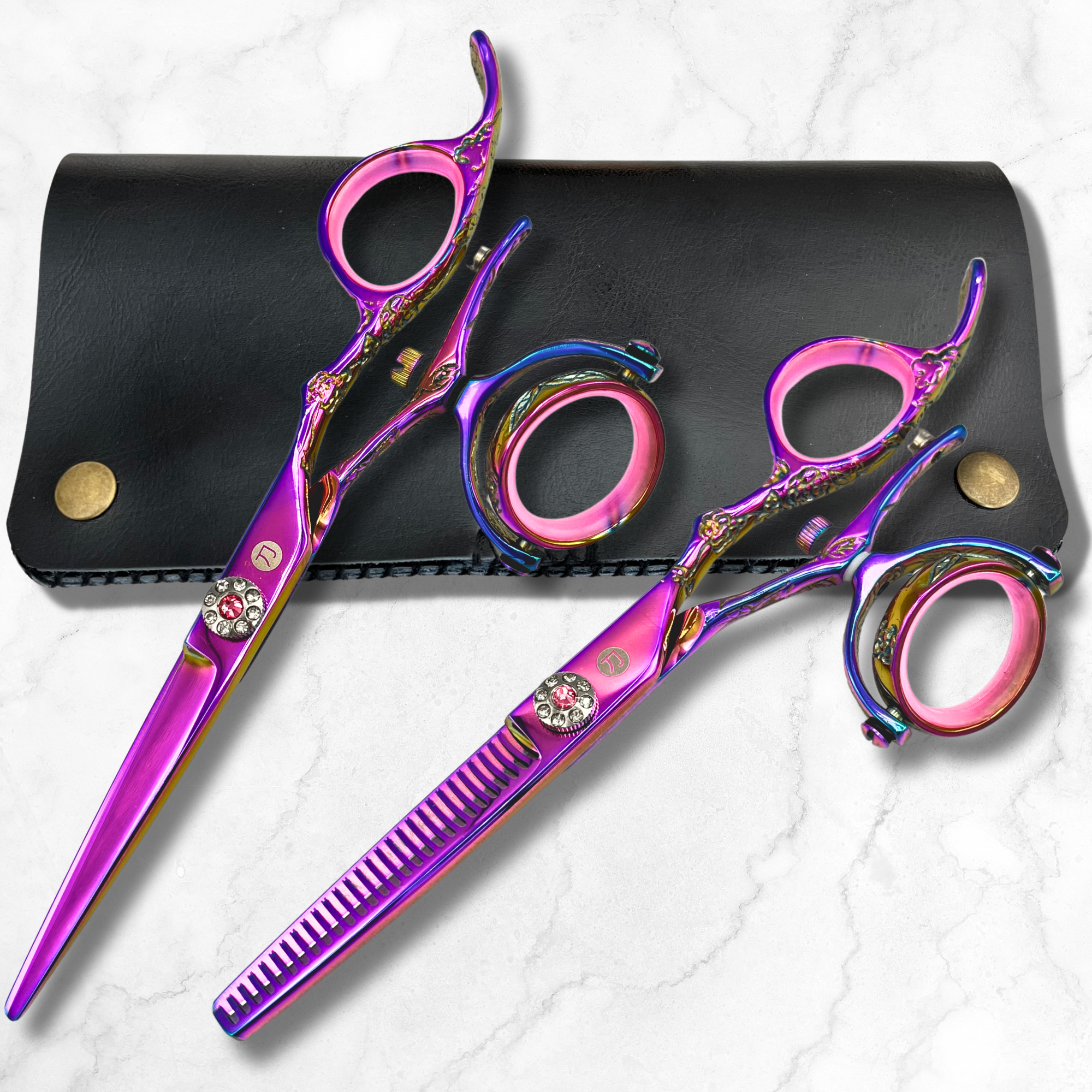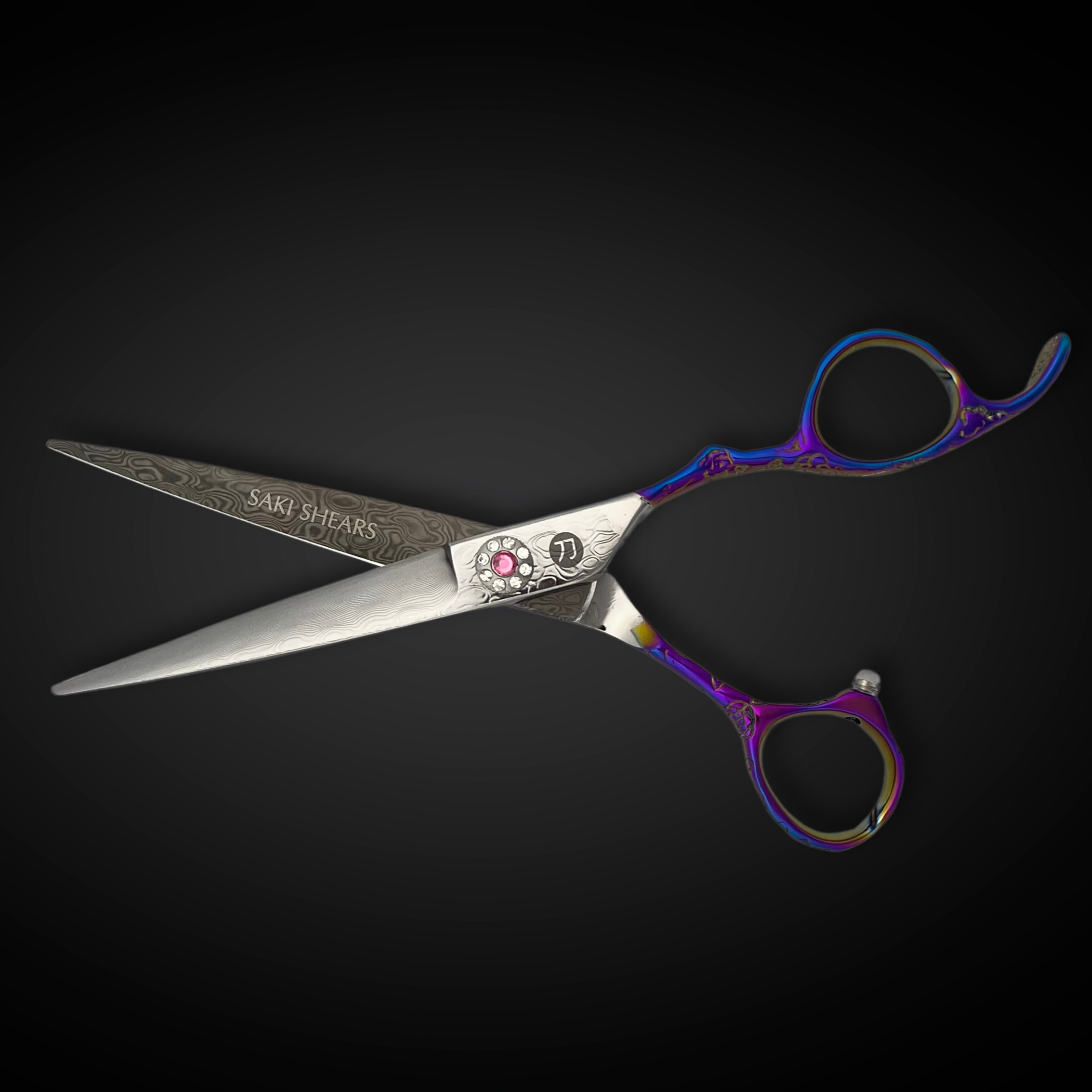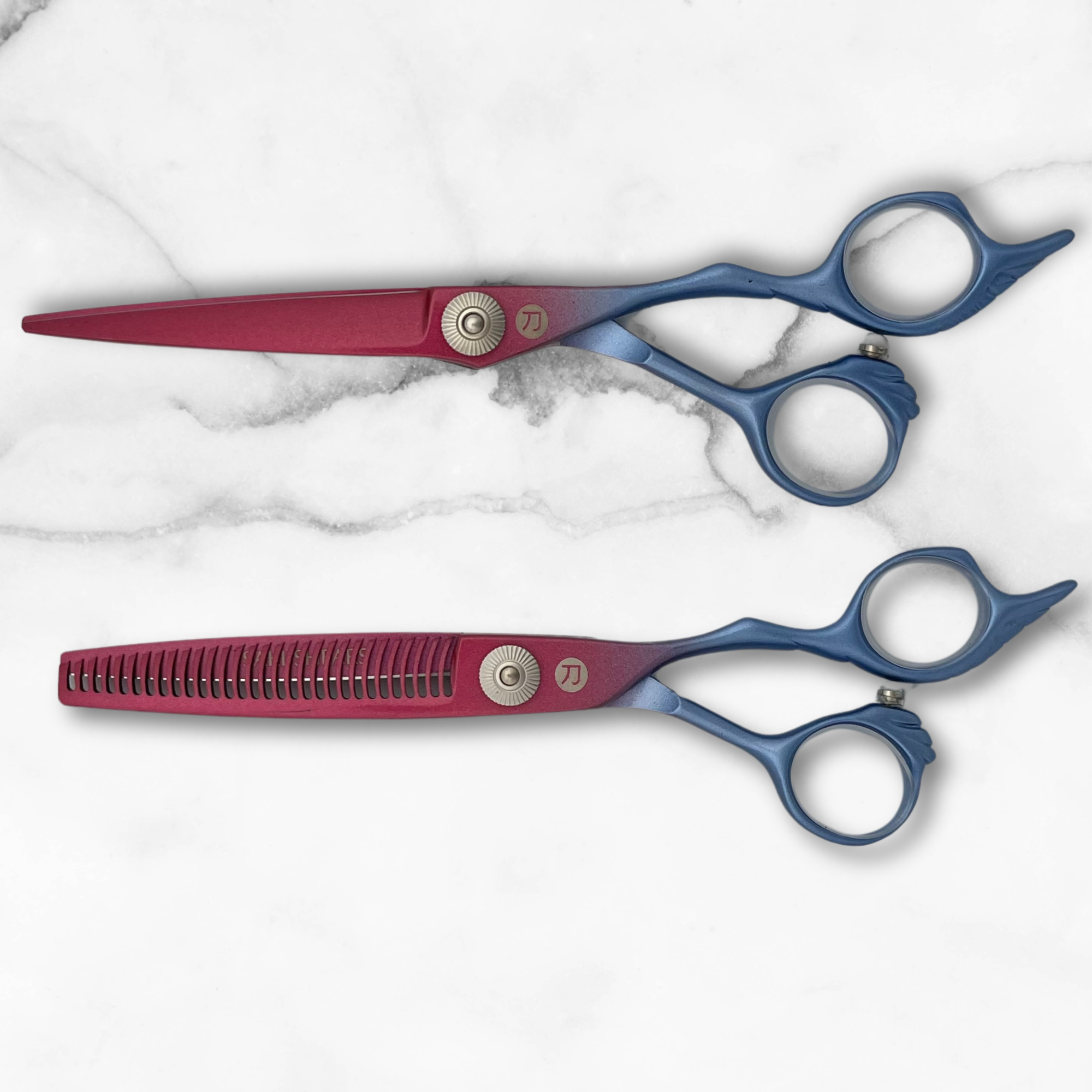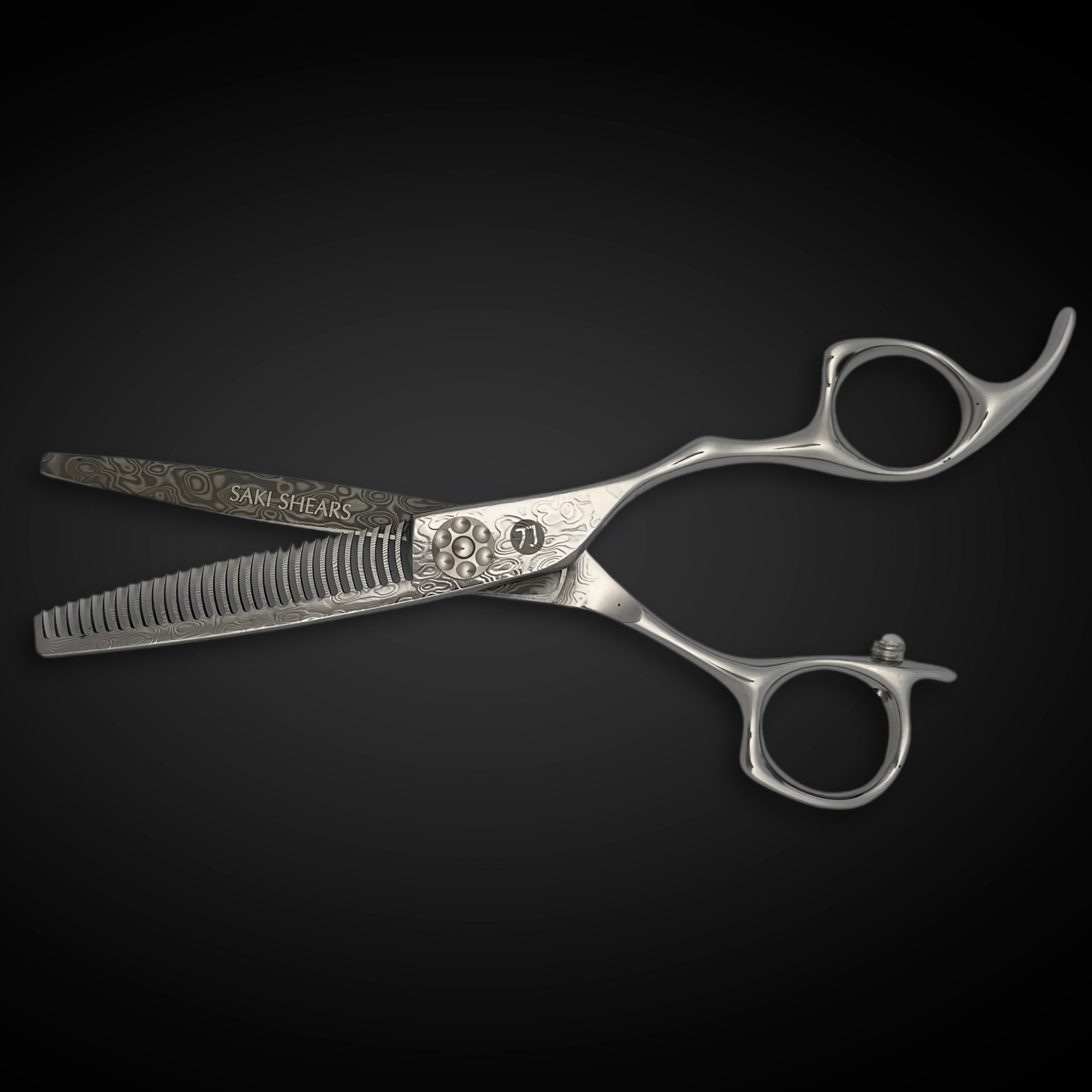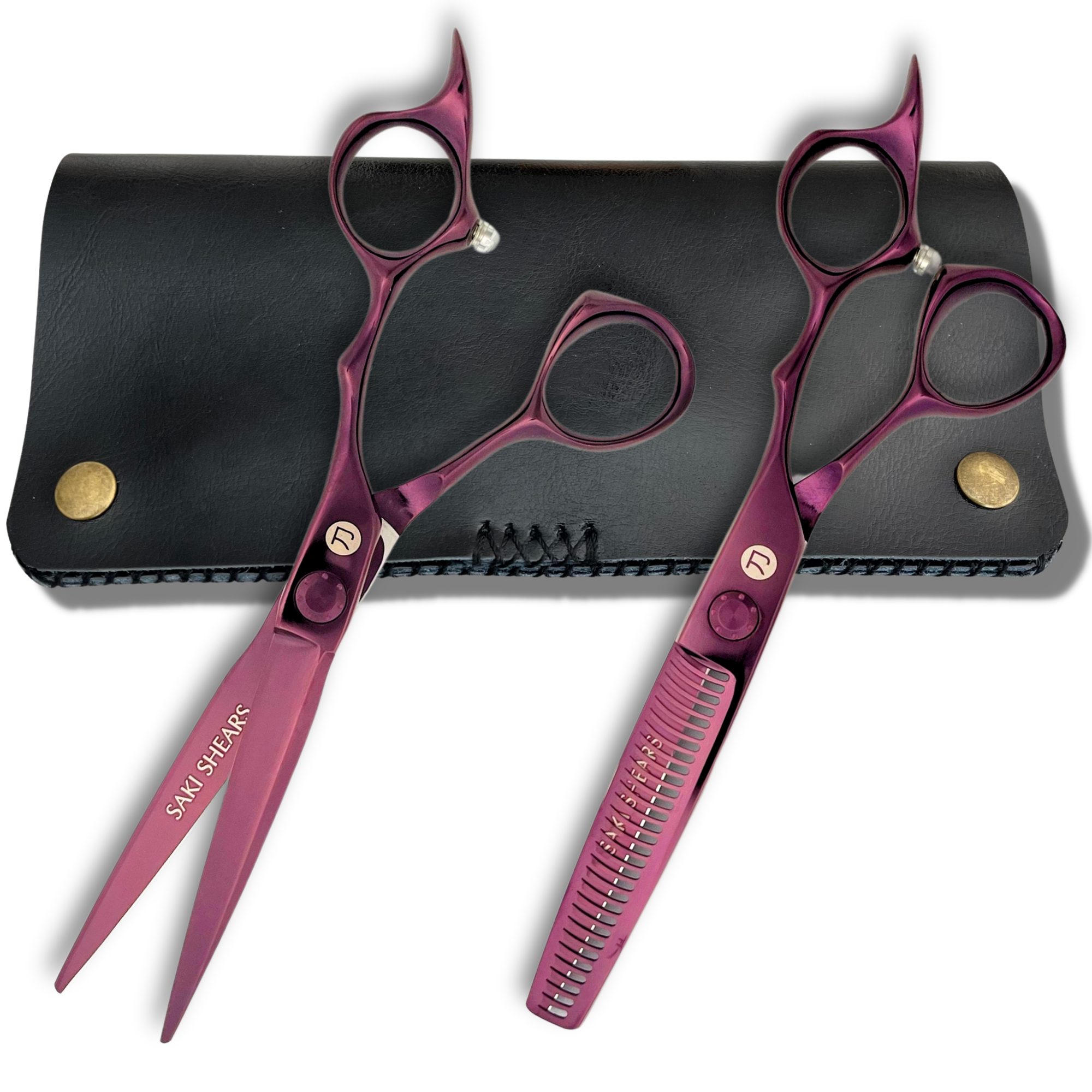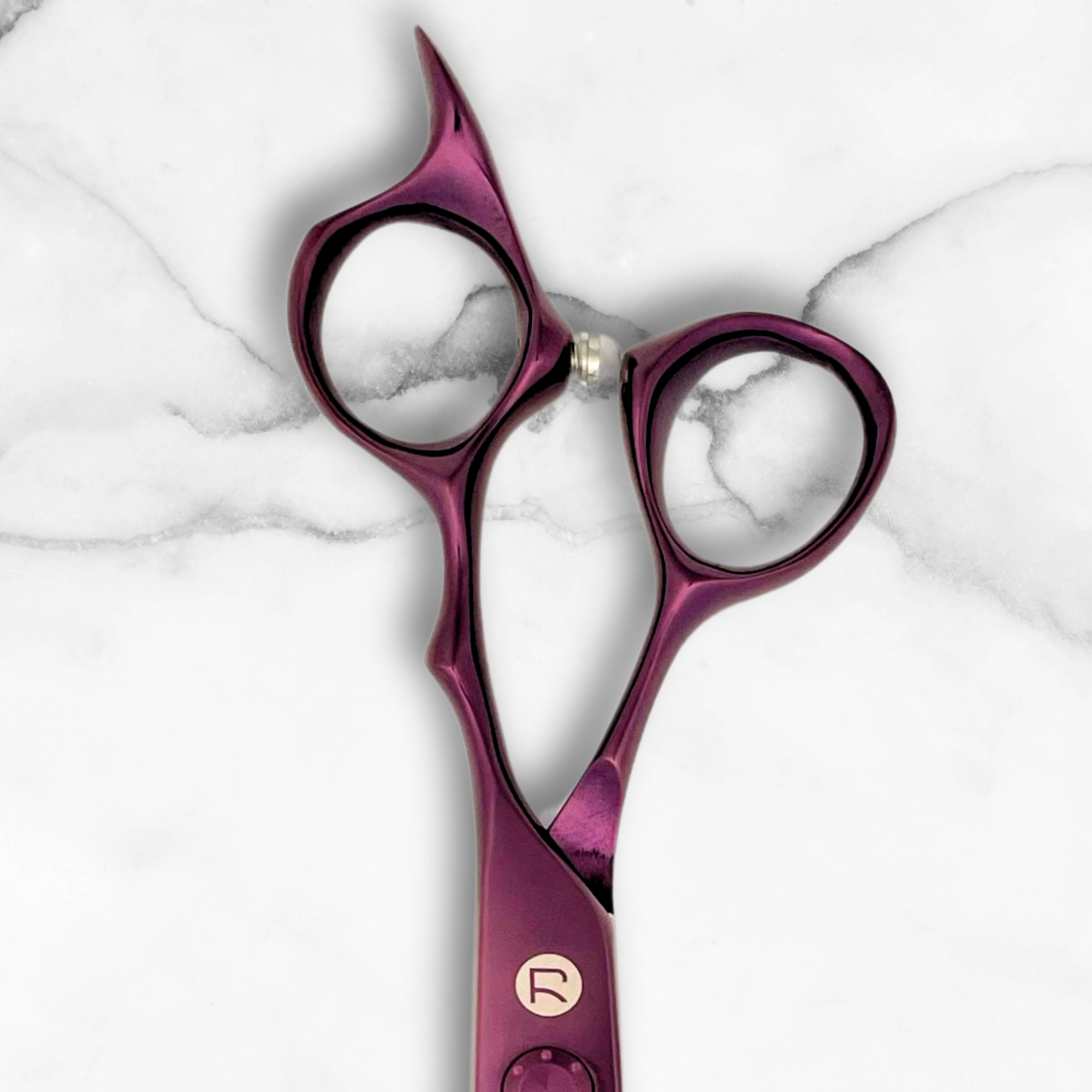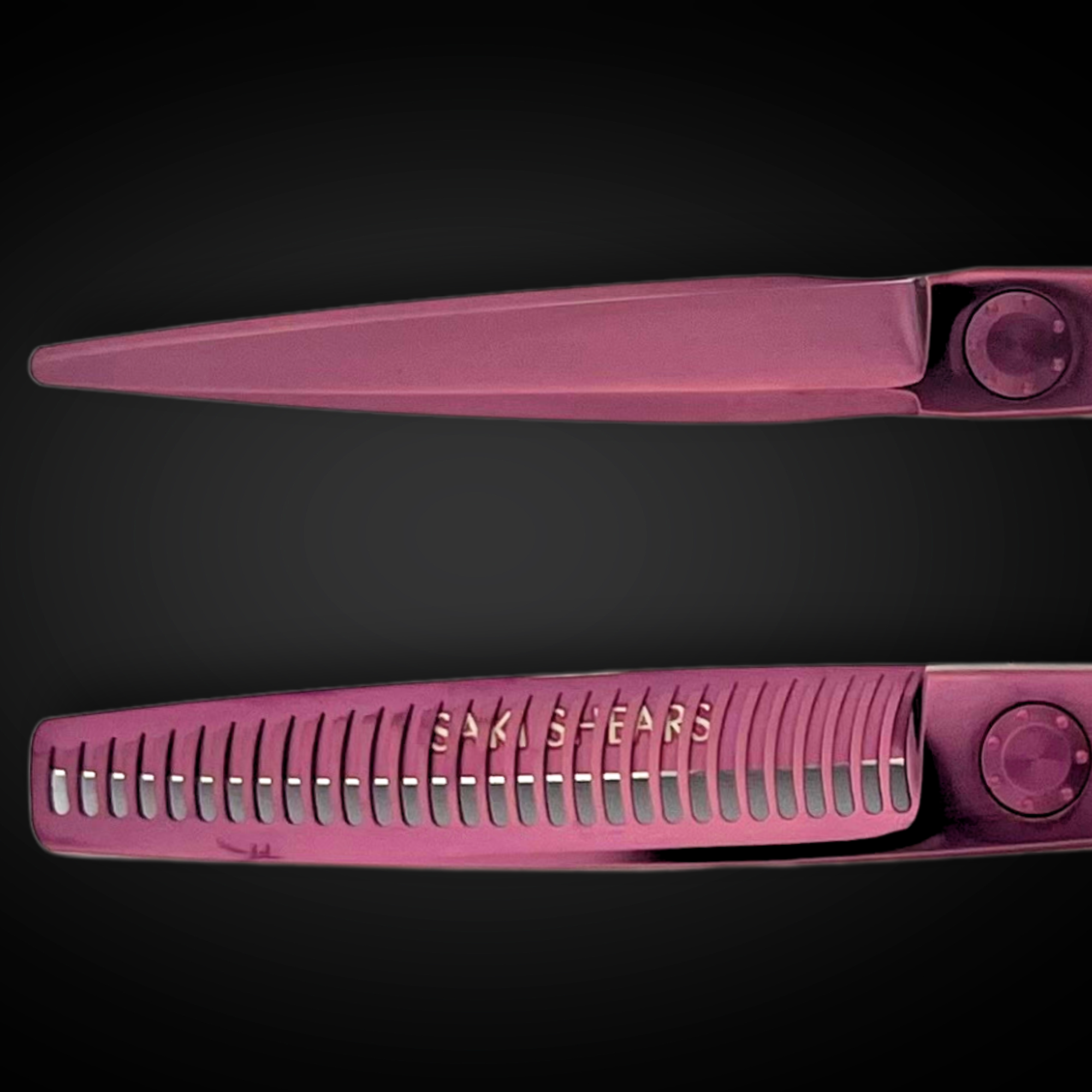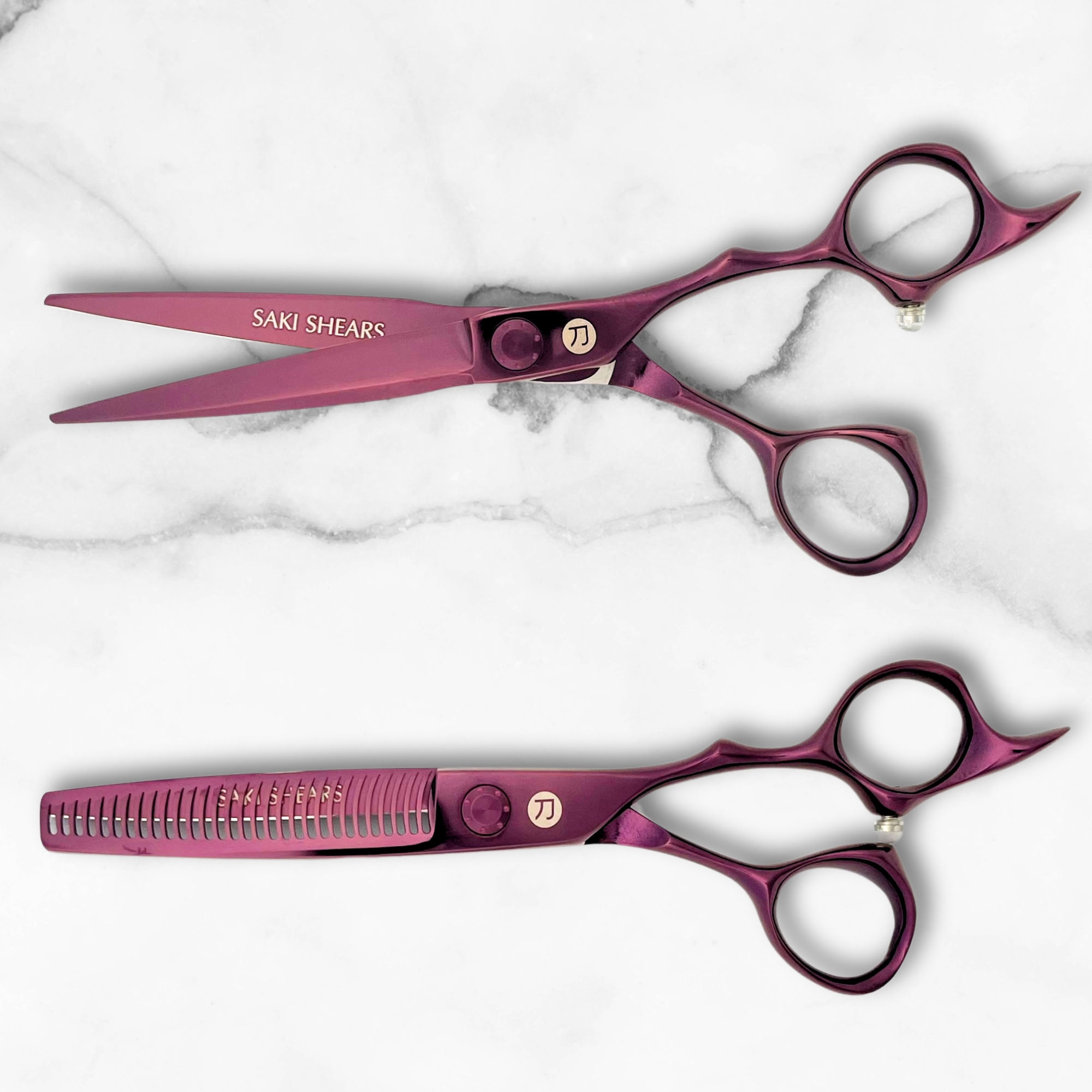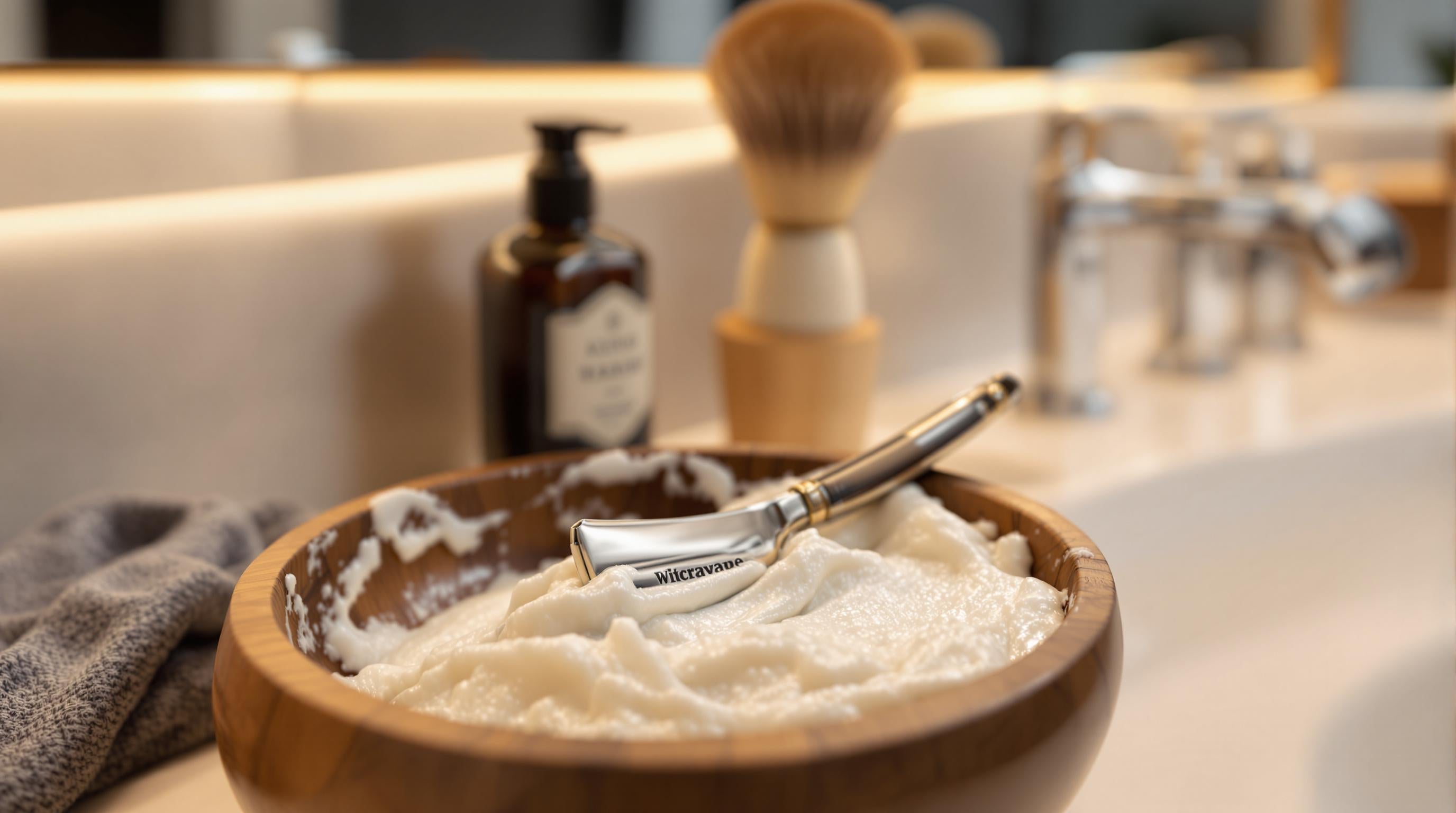How to Care for Your Straight Razor: Cleaning and Storage Tips
Taking care of your straight razor is simple but essential for maintaining hygiene, safety, and performance. Here’s what you need to know:
- Daily Care: Clean with mild soap, sanitize with isopropyl alcohol, and apply a thin coat of blade oil to prevent rust.
- Weekly Deep Clean: Use soapy water, barbicide for disinfection, and inspect for buildup or damage.
- Proper Drying: Use a lint-free cloth and ensure the razor is completely dry to avoid rust.
- Storage: Store in a cool, dry place using a leather pouch, wooden box, or razor stand. For long-term storage, apply blade oil and check regularly for rust.
- Maintenance: Strop daily to keep the blade sharp and hone every 1-6 months depending on use.
Quick Tip: Regular care can extend your razor's lifespan by up to 10-20 years while ensuring precise and safe shaves.
Keep reading for detailed cleaning instructions, storage methods, and maintenance tips to keep your straight razor in top condition.
How to Clean and Maintain Your Straight Razor: A Professional Guide
Required Cleaning Tools
Having the proper tools makes razor maintenance easier and ensures it stays in great shape. These tools not only simplify the process but also help extend the life of your razor.
Basic Cleaning Supplies and Tools
Here are some key supplies you'll need for razor care:
| Supply | Purpose |
|---|---|
| Lint-Free Cloths | For cleaning and drying |
| Isopropyl Alcohol (70%) | For sanitizing the razor |
| Blade Oil | Helps prevent rust |
| Mild Soap | For regular cleaning |
| Razor Stand | Promotes air circulation |
| Storage Case | Protects the razor (e.g., leather pouch or wooden box) |
Stick to soft, non-abrasive cloths to avoid scratching or damaging the blade [1].
Blade-Safe Cleaning Products
When choosing cleaning products, opt for ones specifically made for razors. A mild, unscented soap solution is an excellent choice for daily cleaning [2]. After cleaning, apply a small amount of blade oil to keep rust at bay and maintain the blade's performance [1][2].
For effective cleaning:
- Use gentle soap solutions for everyday maintenance.
- Avoid harsh chemicals or abrasive materials that could harm the blade.
- Keep your supplies organized for easier upkeep.
With these tools and tips, you'll be set to maintain your razor in top condition.
Cleaning Instructions
Keeping your straight razor clean is key to maintaining its performance and avoiding bacteria buildup. Here's how to take care of your razor the right way.
Post-Use Cleaning
After each use, mix some warm water with a mild dish detergent in a small bowl. Use a soft brush to gently clean the blade and remove any residue [1].
Steps to follow:
- Rinse the blade under warm water to wash away debris.
- Use the soap solution and a soft brush to scrub the blade.
- Sanitize the blade with 70% isopropyl alcohol.
- Apply a thin coat of razor oil to protect the metal.
Weekly Deep Clean
Daily cleaning works for regular maintenance, but a deeper clean once a week ensures your razor stays in top condition.
Wash the razor thoroughly with soapy water, paying extra attention to the pivot points and scales. To sanitize, immerse the blade in a barbicide solution for up to 10 minutes [2]. For any stubborn buildup in tight spots, use a toothpick or a q-tip to clean them out.
Drying Methods
Drying your razor properly is just as important to prevent rust and keep it in great shape:
- Wipe the blade dry with a lint-free cloth.
- Use compressed air to remove moisture from hard-to-reach areas, like the pivot pin.
- Leave the razor open to air dry completely before storing it.
Once your razor is clean and dry, you're ready to store it properly to keep it in excellent condition.
Storage Methods
Taking care of your straight razor doesn't stop at cleaning - it’s just as important to store it correctly. This helps maintain its sharpness and prevents damage over time. Here’s how to store your razor properly for both daily use and longer periods.
Daily Storage
Once your razor is clean and dry, storing it the right way keeps it ready for your next use. A good storage case not only protects the blade but also helps extend its lifespan.
Here are some popular daily storage options:
| Storage Type | Benefits | Ideal For |
|---|---|---|
| Leather Pouch | Absorbs moisture, portable | Barbers or stylists on the move |
| Wooden Box with Felt | Offers great protection, controls humidity | Permanent salon or shop storage |
| Draw-string Travel Bag | Lightweight and easy to carry | Short-term travel |
Wherever you store it, make sure the environment is cool, dry, and away from direct sunlight or excessive humidity. If you use a razor stand, it can help keep the blade elevated and organized, reducing the chance of accidental damage [3].
Extended Storage
If you won’t be using your razor for a while, take a few extra steps to protect it. Start by applying a thin layer of blade oil to guard against moisture. Then, store it in a dry, ventilated space with a consistent temperature. A wooden box with a felt lining works well for this purpose. Check the razor monthly for any signs of rust or wear [3].
"Regular inspections are essential to identify any damage or signs of wear. Check the razor for damage every time it is stored and before each use to ensure it remains in good condition and to prevent any safety issues." [3]
Barbers often use storage systems like wooden boxes with separate compartments to safely store multiple razors. This prevents blades from touching and ensures the storage environment stays appropriate.
Upkeep Guidelines
Keeping your straight razor in top shape takes more than just cleaning and storage. A consistent maintenance routine can help you avoid problems and make your razor last longer.
Sharpening Schedule
Stropping your razor daily is key to maintaining its sharpness. Here's a simple schedule to guide your upkeep:
| Maintenance Type | Frequency | Purpose |
|---|---|---|
| Stropping | Before each use | Aligns the blade edge for daily sharpness |
| Honing | Every 1-6 months | Restores sharpness based on usage |
"If you use a strop correctly and treat your blade well, you will only need to hone once every month or even per year." - Murdock London
Besides sharpening, regular check-ups can help you spot and fix issues early.
Damage Checks
During your weekly inspections, focus on these areas:
- Look for nicks or uneven spots on the blade edge.
- Check for rust or tarnish on the razor's surface.
- Ensure the handle and pins are secure and functioning properly.
- Test the blade’s performance by cutting arm hair (without touching the edge).
Add a drop of mineral oil to the pivot mechanism monthly, and address any pulling sensation during shaving - it’s a sign your razor needs attention.
Professional Repairs
Sometimes, professional help is the best option. Consider reaching out to an expert if:
- The blade has severe chips or nicks.
- Rust spots persist despite cleaning efforts.
- The razor doesn’t stay sharp even after honing.
- The handle or pivot shows structural problems.
As ShaveSmith emphasizes, proper restoration is key:
"My methods have been specially developed to preserve the temper of your blade." - ShaveSmith, Straight Razor Restoration Services
Professional repairs ensure your razor stays reliable and meets the standards required for precise grooming.
Conclusion
Key Takeaways
Taking care of your straight razor involves regular cleaning, proper storage, and consistent upkeep. According to research from The New England Shaving Company, regular cleaning can extend a razor's lifespan by up to three times [1].
Here's a quick look at effective razor maintenance:
| Maintenance Focus | Key Actions | Benefits |
|---|---|---|
| Daily Care | Clean and sanitize regularly | Stops bacteria buildup |
| Weekly Care | Perform deep cleaning and inspect for damage | Catches issues early |
| Storage | Use a protective case or stand | Avoids physical damage |
| Long-term Care | Seek professional servicing when needed | Maintains peak performance |
When you stick to these practices, the performance and durability of your tools improve significantly.
Why Quality Tools Make a Difference
Pairing good maintenance habits with high-end tools ensures your razor remains effective for years. Research from Naked Armor reveals that premium steel blades need honing 40% less often than standard ones [2].
The advantages of a well-maintained razor include:
- Smooth, irritation-free shaves
- Better control and increased safety
- Lower upkeep costs over time
- A longer lifespan for your razor
It's all about consistency. A regular care routine is far more effective than occasional deep cleanings. With these tips and the right tools, you’ll keep your grooming gear in top shape while maintaining professional results.
FAQs
How do barbers clean straight razors?
Barbers clean straight razors by using hot water and mild soap to remove hair, skin cells, and shaving cream residue after each use. These steps are essential to maintaining hygiene in professional grooming.
Here’s a quick look at the tools and methods they use:
| Cleaning Component | Purpose | Frequency |
|---|---|---|
| Hot Water | Washes away debris and softens residue | After each use |
| Mild Soap | Cleans oils and sanitizes the blade | Daily cleaning |
| Rubbing Alcohol | Adds an extra layer of disinfection | Weekly deep clean |
| Lint-free Cloth | Dries the blade thoroughly | After every cleaning |
To keep the blade in top condition, barbers also recommend applying a thin layer of blade oil after cleaning. This helps prevent rust and protects the blade from moisture [1].
Using mild soap ensures the blade stays clean without causing damage [2]. Following these cleaning techniques keeps razors hygienic and sharp for every shave [1][3].

